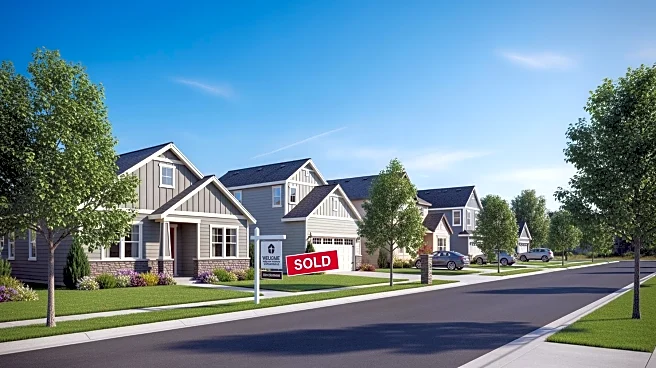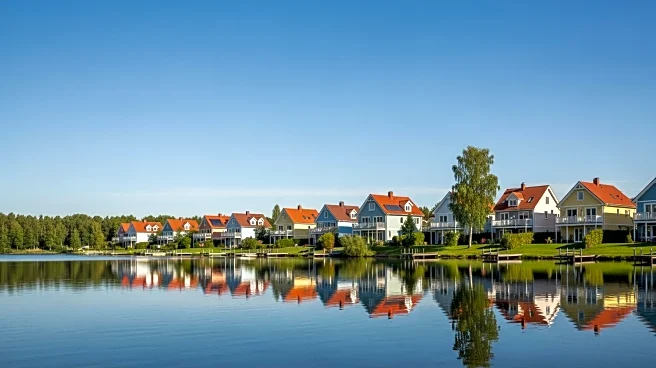What's Happening?
The real estate market in Walla Walla is attracting significant interest from homebuyers in various metropolitan areas, particularly Seattle and Los Angeles. According to data compiled by Stacker using cross-market demand statistics from Realtor.com,
Seattle leads with a view share of 27.1%, followed by Kennewick, WA, at 9.9%, and Los Angeles, CA, at 8.2%. This trend is occurring amidst a nationwide scarcity of homes on the market, which has kept prices elevated despite a slowdown in sales over the past year. The data reflects the third quarter of 2025, highlighting the ongoing demand for homes in Walla Walla from these regions.
Why It's Important?
The interest in Walla Walla from major metropolitan areas like Seattle and Los Angeles underscores a broader trend of migration and real estate investment in less densely populated areas. This shift could have significant implications for local economies, potentially driving up property values and altering the demographic landscape. As urban residents seek more affordable housing options and a change in lifestyle, smaller cities like Walla Walla may experience growth in infrastructure and services to accommodate new residents. This trend also reflects the impact of remote work and changing preferences in living environments post-pandemic.
What's Next?
As interest in Walla Walla continues to grow, local real estate markets may need to adapt to increased demand. This could involve new housing developments and expansions in local amenities to cater to incoming residents. Real estate agents and developers might focus on marketing the area's unique attributes, such as its wine country and scenic landscapes, to attract more buyers. Additionally, local government and community leaders may need to address potential challenges related to infrastructure and resource allocation to support the growing population.
Beyond the Headlines
The migration trend towards Walla Walla could have cultural implications, as new residents bring diverse backgrounds and perspectives to the area. This influx might foster a more vibrant community atmosphere, with increased cultural events and activities. However, it could also lead to tensions over resource allocation and changes in community identity. Long-term, this trend might influence regional planning and development strategies, emphasizing sustainable growth and community integration.













